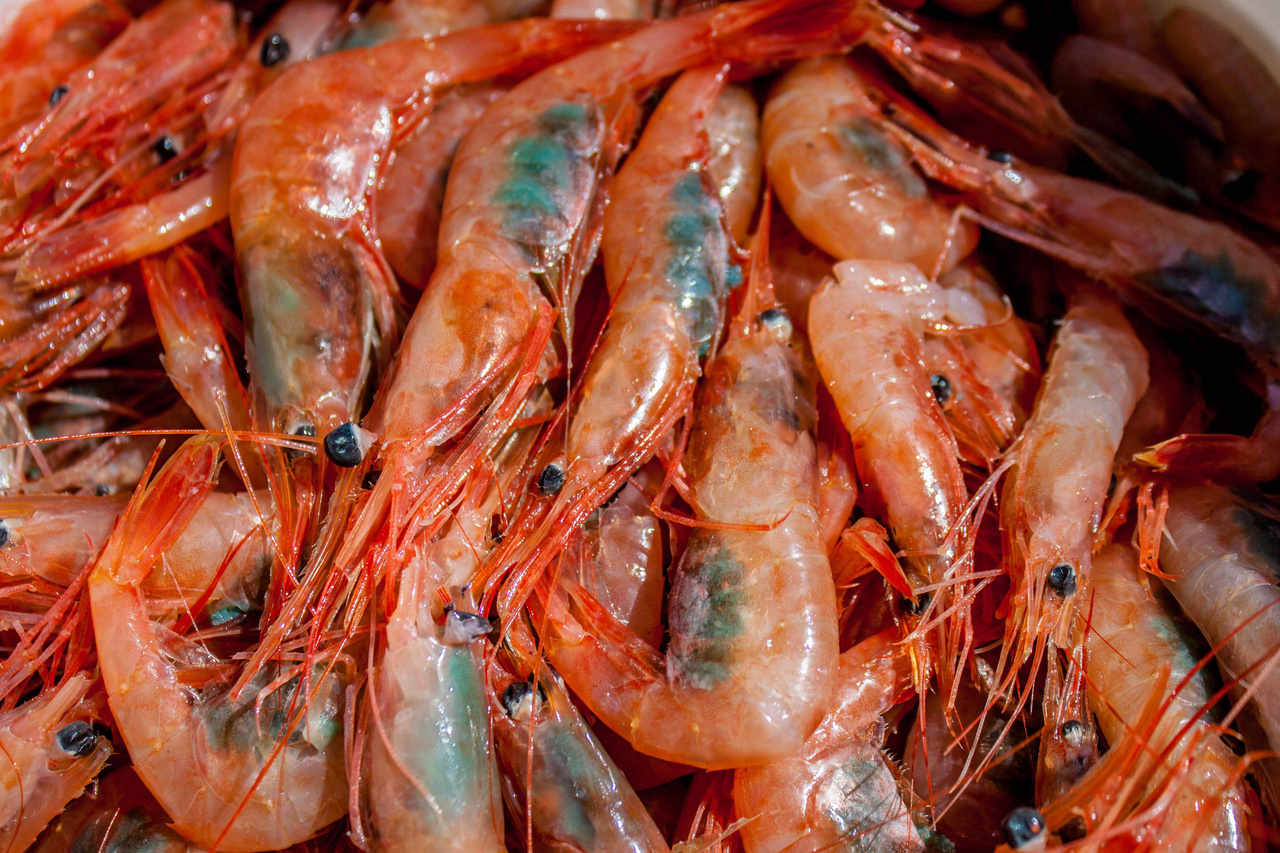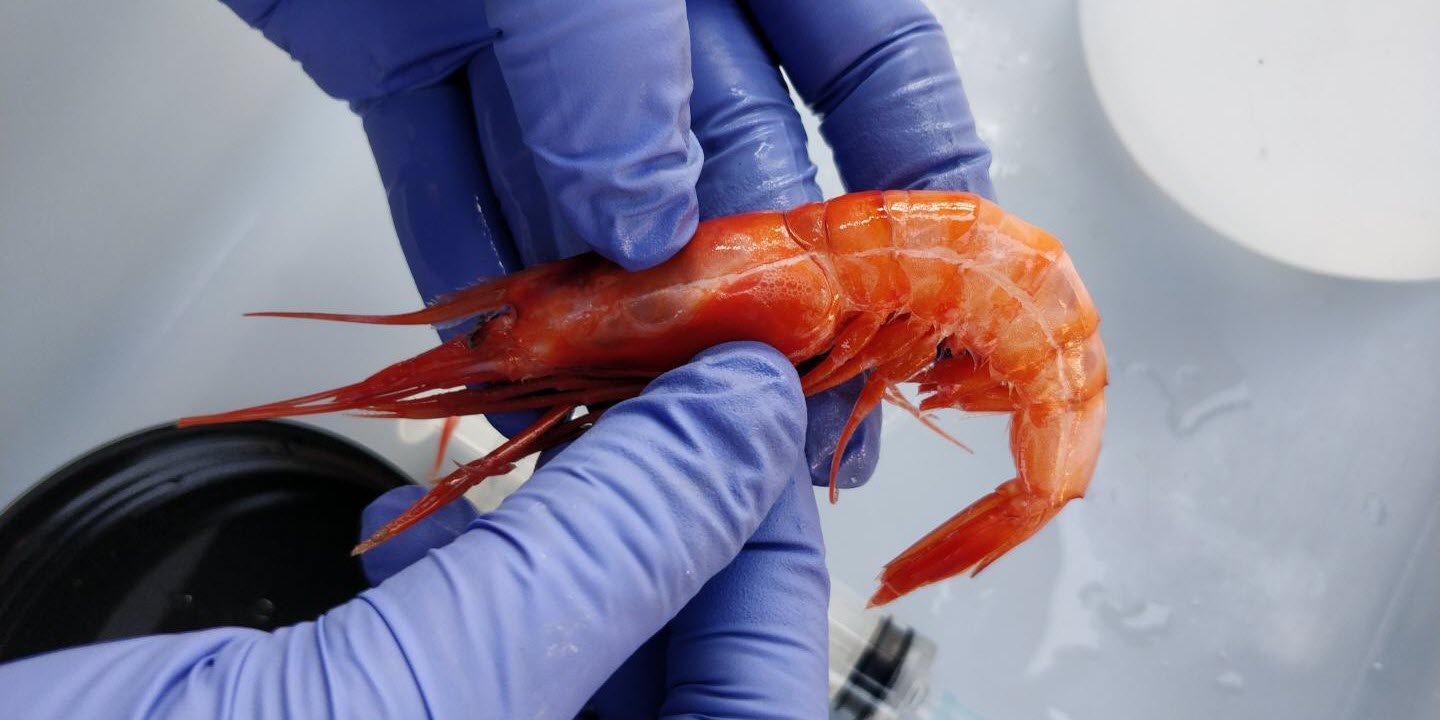Red Blue Shrimp can suffer from bacterial infections and poor water quality. Keeping their habitat clean is crucial for their health.
Red Blue Shrimp, also known as Neocaridina davidi, are vibrant freshwater shrimp popular in aquariums. They thrive in clean, well-maintained tanks. Poor water quality can lead to health issues like bacterial infections and stress. Regular water changes and monitoring water parameters help prevent these problems.
Providing a balanced diet and avoiding overcrowding also contribute to their well-being. Healthy Red Blue Shrimp display bright colors and active behavior. Observing them regularly allows early detection of any health issues. Proper care ensures they live healthy, vibrant lives, enhancing the beauty of any aquarium.
Common Health Issues
Red Blue Shrimp are colorful and fascinating creatures. They are popular in many aquariums. Despite their hardy nature, they can face health problems. Knowing the common health issues helps keep them healthy and happy.
Signs Of Illness
Recognizing the signs of illness in Red Blue Shrimp is vital. Here are some common indicators:
- Color changes: Faded or dull colors can signal stress or disease.
- Behavior changes: Lethargy or hiding more than usual.
- Physical deformities: Bent antennae or missing limbs.
- Unusual spots: Black or white spots on the body.
- Molting problems: Difficulty shedding exoskeleton.
Preventive Measures
Preventive measures help keep Red Blue Shrimp healthy. Follow these steps:
- Water quality: Maintain clean water with proper parameters.
- Balanced diet: Provide a varied diet with essential nutrients.
- Regular monitoring: Check shrimp and tank conditions daily.
- Quarantine new arrivals: Isolate new shrimp before adding them to the tank.
- Avoid overcrowding: Give each shrimp enough space to thrive.
By following these steps, you can prevent common health problems in Red Blue Shrimp.
Water Quality
Maintaining excellent water quality is crucial for the health of your Red Blue Shrimp. Poor water quality can lead to various health issues, affecting their survival and growth. Let’s delve into the specifics of what constitutes optimal water conditions and how to test for them.
Optimal Parameters
Red Blue Shrimp thrive in water with specific parameters. Ensuring these parameters are met is vital.
| Parameter | Optimal Range |
|---|---|
| pH Level | 6.5 – 7.5 |
| Temperature | 72°F – 78°F (22°C – 26°C) |
| Ammonia | 0 ppm |
| Nitrite | 0 ppm |
| Nitrate | Below 20 ppm |
Testing Methods
Regular testing ensures water quality stays within the optimal range. Use these methods:
- Test Strips: Quick and easy for regular monitoring.
- Liquid Test Kits: More accurate but take longer.
- Digital Meters: Provide precise readings but can be expensive.
Testing should be done weekly to catch any deviations early. If values deviate from the optimal range, immediate action is necessary. Small changes can prevent big problems.
Diet And Nutrition
Red Blue Shrimp are fascinating creatures. Their health largely depends on diet and nutrition. A balanced diet ensures they stay vibrant and active. Poor nutrition can lead to health issues, including a weakened immune system.
Balanced Diet
A balanced diet is vital for Red Blue Shrimp. Feed them a mix of plant-based and protein-rich foods. Algae, spinach, and zucchini are excellent plant-based options.
Protein-rich foods include brine shrimp and bloodworms. These provide essential nutrients. Ensure the food is fresh and clean.
Avoid overfeeding. Excess food can pollute their tank. This leads to water quality issues. Poor water quality affects their health negatively.
Feeding Frequency
Feeding frequency is crucial. Feed adult shrimp once a day. Young shrimp may need more frequent feedings.
Provide small portions each time. This ensures they eat all the food. Remove any uneaten food within a few hours.
Overfeeding can lead to obesity and other health problems. Stick to a consistent feeding schedule.
| Food Type | Examples |
|---|---|
| Plant-Based | Algae, Spinach, Zucchini |
| Protein-Rich | Brine Shrimp, Bloodworms |
- Balanced Diet: Mix of plant-based and protein-rich foods.
- Feeding Frequency: Once a day for adults, more for young shrimp.
- Avoid Overfeeding: Leads to obesity and water pollution.

Credit: www.fisheries.noaa.gov
Tank Environment
The tank environment plays a crucial role in the health of Red Blue Shrimp. A well-maintained tank ensures they thrive and live longer. Let’s dive into the key aspects of creating an ideal tank environment.
Ideal Setup
Setting up the tank properly is essential. Here are the main components:
- Tank Size: A minimum of 5 gallons is recommended.
- Water Temperature: Keep between 70°F and 80°F (21°C – 27°C).
- pH Levels: Maintain a pH of 6.5 to 8.0.
- Substrate: Use fine gravel or sand.
- Plants: Add live plants for hiding spots.
- Lighting: Moderate lighting for 8-12 hours a day.
Maintenance Tips
Regular maintenance keeps the tank environment healthy. Follow these tips:
- Water Changes: Perform 25% water changes weekly.
- Filter Cleaning: Clean the filter every month.
- Monitor Parameters: Check water parameters weekly.
- Algae Control: Remove algae manually or use algae-eating fish.
- Vacuum Substrate: Vacuum the substrate monthly to remove debris.
Proper tank setup and maintenance are key to preventing health problems in Red Blue Shrimp. Create a stable environment, and your shrimp will thrive.
Stress Factors
Red Blue Shrimp are sensitive creatures. Various stress factors can harm them. Understanding these factors helps keep shrimp healthy and happy.
Causes Of Stress
Several factors can cause stress in Red Blue Shrimp:
- Poor Water Quality: Dirty water can make shrimp sick. Regularly test and clean water.
- Sudden Temperature Changes: Shrimp need stable temperatures. Avoid rapid temperature shifts.
- Overcrowding: Too many shrimp in one tank leads to stress. Ensure enough space for each shrimp.
- Inadequate Hiding Spots: Shrimp need places to hide. Provide plenty of hiding spots.
- Improper Diet: Wrong foods can stress shrimp. Feed them a balanced diet.
Stress Reduction
Reducing stress is crucial for Red Blue Shrimp health:
- Maintain Water Quality: Use a good filter. Change the water regularly. Monitor water parameters.
- Stable Temperature: Use a heater to keep the temperature consistent. Avoid placing the tank in direct sunlight.
- Provide Enough Space: Ensure the tank is not overcrowded. Follow the recommended shrimp per gallon ratio.
- Add Hiding Spots: Use plants, rocks, and decorations. Create plenty of hiding places.
- Proper Diet: Feed shrimp a variety of foods. Include algae, vegetables, and shrimp pellets.
Following these steps can reduce stress and improve shrimp health.
Disease Prevention
Ensuring the health of your Red Blue Shrimp is vital. Disease prevention can save you time and stress. Healthy shrimp are colorful and active. Follow these key steps to keep them healthy and disease-free.
Quarantine Procedures
Quarantine new shrimp before adding them to the main tank. This step is crucial. Quarantine helps to prevent the spread of diseases. A separate tank is needed for quarantine. This tank should have similar water conditions to the main tank.
Keep new shrimp in quarantine for at least 30 days. Observe them daily. Look for any signs of disease. Feed them nutritious food to boost their immune system. If you notice any issues, treat them immediately.
Here’s a simple quarantine checklist:
- Set up a separate tank
- Match water conditions to the main tank
- Quarantine for 30 days
- Daily observation
- Immediate treatment if needed
Regular Health Checks
Regular health checks are essential for shrimp health. Check your shrimp weekly. Look for changes in color or behavior. Healthy shrimp are bright and active.
Use a small flashlight to inspect them. Look closely at their legs and antennae. Check for parasites or any unusual growths. Inspect their shells for any signs of damage.
Keep a health log for your shrimp. Note any changes you observe. This will help you track their health over time. Early detection of problems makes treatment easier.
Here’s a health check checklist:
- Weekly inspection
- Use a flashlight for a close look
- Check legs, antennae, and shells
- Look for parasites or growths
- Maintain a health log
| Health Check Item | What to Look For |
|---|---|
| Color | Bright and vibrant |
| Behavior | Active and responsive |
| Legs and Antennae | No parasites or damage |
| Shell | No cracks or unusual growths |
Common Treatments
Red Blue Shrimp are delicate creatures. They can face health problems. Knowing common treatments can help keep them healthy. This section covers medications and natural remedies for Red Blue Shrimp.
Medications
Medications are often necessary to treat serious issues. Bacterial infections are common. They can be treated with antibiotics.
Here is a table of common medications:
| Health Issue | Medication | Dosage |
|---|---|---|
| Bacterial Infection | Oxytetracycline | 20 mg per liter |
| Fungal Infection | Malachite Green | 0.1 mg per liter |
| Parasitic Infection | Formalin | 25 mg per liter |
Always follow dosage instructions. Overdosing can harm your shrimp. Consult a vet for severe cases.
Natural Remedies
Natural remedies can be effective for minor issues. Garlic is a natural antibiotic. It helps fight infections. Crush a small clove and add it to the tank.
Another remedy is Indian Almond Leaves. They have antibacterial properties. Add one leaf per 10 liters of water.
- Garlic: Crush and add to the tank.
- Indian Almond Leaves: One leaf per 10 liters.
Regular water changes are crucial. Clean water keeps your shrimp healthy. Change 20% of the water weekly.
- Perform regular water changes.
- Use natural antibiotics like garlic.
- Add Indian Almond Leaves to the tank.
Natural remedies are often safer. They have fewer side effects. Use them for minor issues.

Credit: www.uab.cat
Breeding Concerns
Red Blue Shrimp are delicate creatures. Breeding them can be tricky due to their sensitivity. Let’s explore the breeding concerns to ensure their health.
Breeding Conditions
Ideal breeding conditions are crucial for Red Blue Shrimp. Here are key factors:
- Water Temperature: Maintain at 72-82°F for optimal breeding.
- pH Levels: Keep pH between 6.5 and 8.0.
- Water Hardness: Soft to moderately hard water is best.
- Tank Size: A 10-gallon tank can house a small colony.
Providing the right environment helps ensure healthy offspring.
Caring For Offspring
Once the Red Blue Shrimp breed, caring for the offspring is essential:
- Separate the Fry: Use a breeder box to protect them.
- Feed Properly: Provide micro foods like powdered algae.
- Water Quality: Keep water clean with regular changes.
These steps help the young shrimp thrive. Healthy offspring lead to a sustainable colony.

Credit: www.lab-worldwide.com
Frequently Asked Questions
Is Blue Shrimp Safe To Eat?
Yes, blue shrimp are safe to eat. Ensure they are properly cooked to avoid any health risks. Always source from reputable suppliers.
Why Do My Blue Shrimp Keep Dying?
Blue shrimp often die due to poor water quality, incorrect pH levels, or inadequate tank conditions. Ensure proper filtration, stable temperatures, and regular water changes. Avoid overfeeding and keep stress levels low. Test water parameters frequently.
How Do You Know If Your Shrimp Are Sick?
Sick shrimp show lethargy, unusual swimming, discoloration, or spots. They may also lose appetite or shed excessively.
What Is The Milk Disease In Shrimp?
Milk disease in shrimp is a bacterial infection. It causes the shrimp’s muscle tissue to turn white. This leads to a milky appearance. The disease affects shrimp health and can lead to mortality.
Conclusion
Ensuring your Red Blue Shrimp are healthy requires regular monitoring and proper care. Address issues promptly to prevent complications. Maintain optimal water conditions and a balanced diet. Healthy shrimp contribute to a vibrant aquarium. By following these steps, you can enjoy a thriving shrimp habitat.
